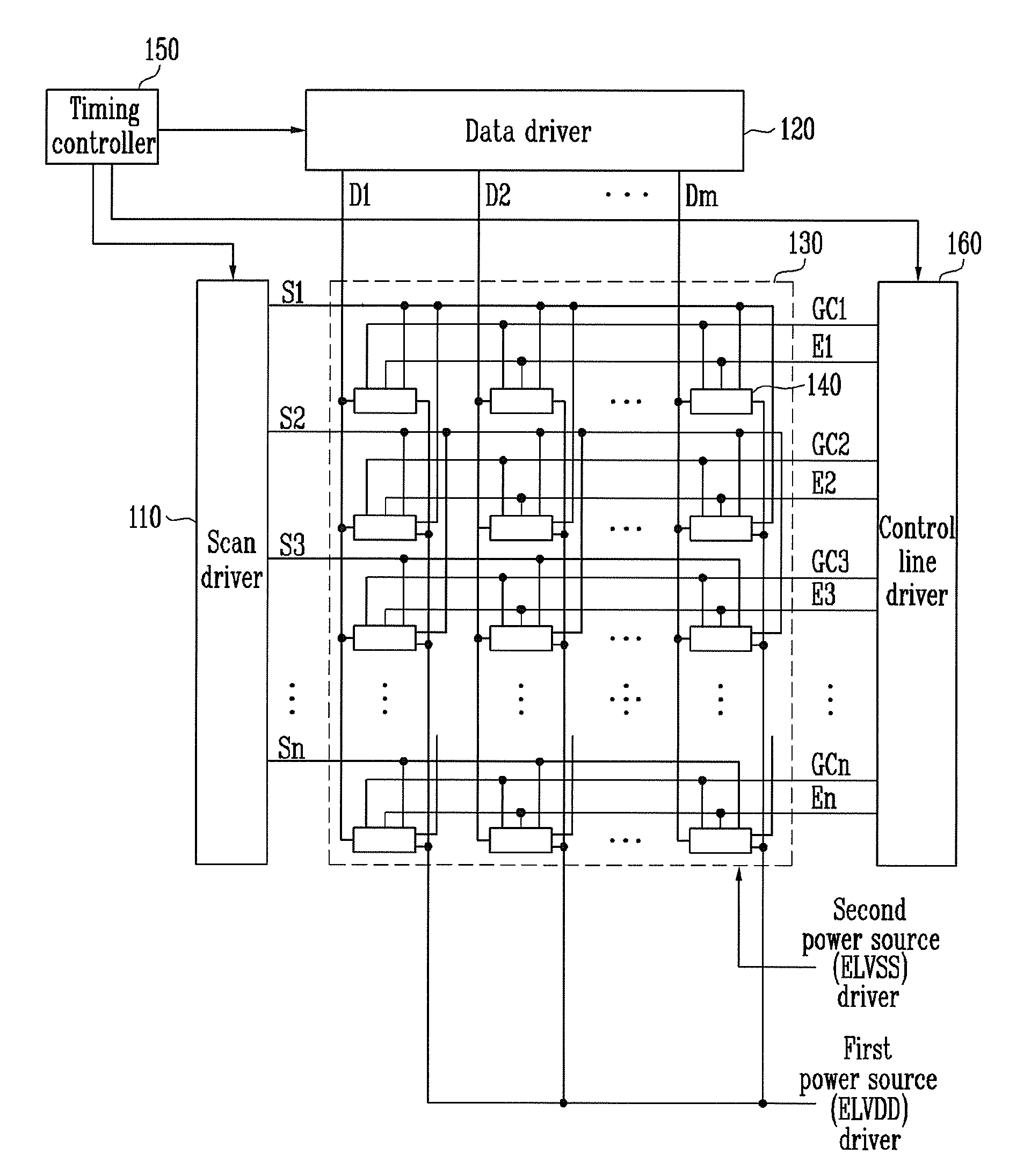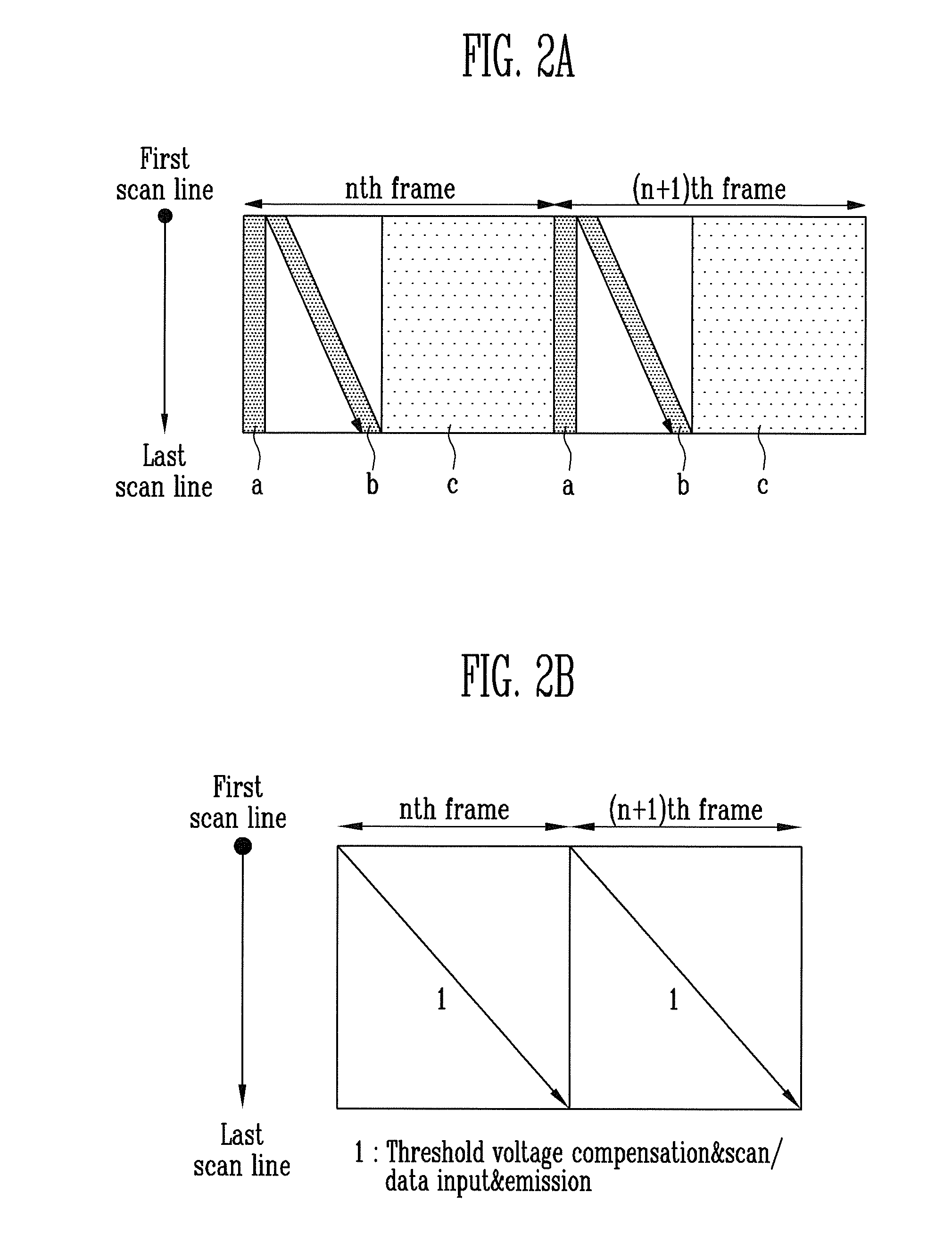Organic light emitting display
a light-emitting display and organic technology, applied in the field of organic light-emitting displays, can solve the problems of difficult manufacturing of driving transistors, heavy weight and large size of crts, and inability to meet the requirements of the application, so as to reduce power consumption
- Summary
- Abstract
- Description
- Claims
- Application Information
AI Technical Summary
Benefits of technology
Problems solved by technology
Method used
Image
Examples
Embodiment Construction
[0027]Hereinafter, certain exemplary embodiments according to the present invention will be described with reference to the accompanying drawings. Here, when a first element is described as being coupled to a second element, the first element may be directly coupled to the second element, or may be indirectly coupled to the second element via a third element. Further, some of the elements that are not essential to the complete understanding of the invention are omitted for clarity. Also, like reference numerals refer to like elements throughout.
[0028]Hereinafter, embodiments of the present invention will be described in detail with reference to the accompanying drawings.
[0029]FIG. 1 is a block diagram illustrating an organic light emitting display according to an embodiment of the present invention. FIGS. 2A and 2B are views illustrating the driving operations of an organic light emitting display according to an embodiment of the present invention.
[0030]Referring to FIG. 1, an organ...
PUM
 Login to View More
Login to View More Abstract
Description
Claims
Application Information
 Login to View More
Login to View More - R&D
- Intellectual Property
- Life Sciences
- Materials
- Tech Scout
- Unparalleled Data Quality
- Higher Quality Content
- 60% Fewer Hallucinations
Browse by: Latest US Patents, China's latest patents, Technical Efficacy Thesaurus, Application Domain, Technology Topic, Popular Technical Reports.
© 2025 PatSnap. All rights reserved.Legal|Privacy policy|Modern Slavery Act Transparency Statement|Sitemap|About US| Contact US: help@patsnap.com



